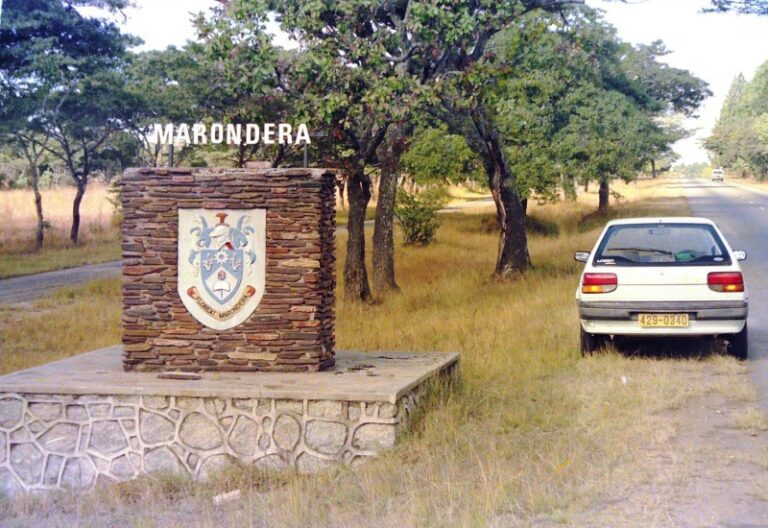
Every morning as Mercy Mubatsa fetches water from a tap outside her home in Penhalonga, a mining area 263 kilometres outside the Zimbabwean capital Harare, her anxiety is heightened.
In March last year, mercury and cyanide deposits from artisanal gold mines in Penhalonga were detected in Lake Alexander, about 32 kilometres from the mines that supply water to her home.
“We are drinking contaminated water,” the 28-year-old mother of one, who was wearing a traditional white headwrap, told IDN in tears.
“Nearby streams are also contaminated. That water has turned brown. It is not safe for drinking.”
In Penhalonga, a gold-rich area in Manicaland Province near the border between Zimbabwe and Mozambique, there are over 1 000 mining pits.
A South African mining firm Metallon Corporation owns the Redwing Mine concession.
Gold baron Pedzisai “Scott” Sakupwanya, who the artisanal miners and civil society organisations in Penhalonga believe is linked to President Emmerson Mnangagwa’s family, through his company Betterbrands Mining, took over mining permits in 2019.
Sakupwanya is a ruling party Zanu PF councillor for Mabvuku Ward 21 in Harare and is also the owner of a gold-buying company, Better Brands Jewellery.
- Information key to climate change mitigation: FAO
- One dies in How Mine mishap
- Pupil commits suicide over satanism taunt
- Apostolic women suffer in the name of religion
Keep Reading
Artisanal and small-scale miners came into the area in 2019 under an arrangement that from the proceeds, they would get 40% and the mining companies 60%.
Authorities in January ordered the mine to close following the death of more than 20 miners in 13 months as well as environmental degradation in the area caused by the mining activities.
But some artisanal miners are still operating in the area.
According to Zimbabwe’s largest workers union, the Zimbabwe Congress of Trade Unions, the country’s unemployment rate of over 90%, coupled with the on-going economic hardships, has forced most of its youths into informal employment, including artisanal mining.
At the same time, the Mnangagwa-led government has been in overdrive to promote artisanal mining around the country with a target of growing the mining industry to US$12 billion by 2023.
In 2021, gold exports, one of the country’s biggest foreign currency earners, earned the country US$1.7 billion, according to the figures from the Finance ministry.
Artisanal and illegal gold miners have invaded most gold-rich areas around the country, including Penhalonga and Mazoe, 38 kilometres from Harare.
In Penhalonga, some of the artisanal miners take their ore to a milling plant used by Better Brands, where they use mercury, a toxic compound, to separate gold from ore, while others take their ore to private millers who deposit the toxic waste into nearby river streams.
Other illegal miners are into alluvial gold mining, where they use mercury.
There are also about six cyanidation plants in Penhalonga, where cyanide is used to process gold.
Both mercury and cyanide were detected in Lake Alexander in Mutasa District in Manicaland, which supplies water to areas in Penhalonga, a residential area of 15 000 people and Mutare, an urban area of more than 224 000 people.
Even though there are no cases of people falling sick or deaths from drinking contaminated water recorded in Penhalonga and Mutare, residents fear for their lives as health problems caused by drinking water contaminated with cyanide and mercury are largely long-term.
Tests which were done by the Standards Association of Zimbabwe (SAZ) showed that the levels of mercury in Lake Alexander are way above the threshold of 0.02 milligrams per litre.
“When dangerous chemical traces are found in household drinking water, we get worried,” said Weston Makoni, chairperson of the Penhalonga Residents and Ratepayers' Association.
David Mutambirwa, a programmes director at the Mutare Residents and Ratepayers' Association, said they were piling pressure on the authorities to act.
“The unfortunate contamination is a cause of concern to the health of the citizens, who consume the precious liquid,” he said.
Both cyanide and mercury are supposed to be carefully monitored to prevent their escape into nearby rivers and dams, but in Penhalonga, the toxic compounds are spilling, threatening animals and people’s health.
Cyanide is poisonous and can cause fatal damage to the brain and heart, according to the United States Centres for Disease Control and Prevention.
Some farmers, such as those at Fairview Farm in Penhalonga, which consists of 58 farmers downstream who get their irrigation water from dams, are in fear that their grain will be contaminated.
“If our livestock is drinking contaminated water and we are using it for irrigation, it means people are consuming contaminated food,” said Moses Mutume, chairperson of the Fairview Farm Development Committee.
Water pollution is not the only worrisome issue for Mubatsa but a serious trail of land degradation too left by the gold miners.
An artisanal miner who spoke to this publication anonymously said that once they exhaust gold, they abandon their mining pits that can be up to 90 metres deep, some of which have become death wells in the hills of Penhalonga.
“The pits pose dangers to others, but that is the norm here. No miners have time to rehabilitate the area,” said Moyo.
Officials from the Mines ministry and companies mining in Penhalonga did not respond to questions sent to them.
“This is a creation of political elites in central government,” said James Mupfumi, director of the Centre for Research and Development (CRD), a research institute based in Mutare.
“Mining entities involved in mineral smuggling, tax evasion and environmental crimes in the area boast that they are protected by Zanu PF, the president, his family, other government elites and securocrats.”
Makoni said there is a need for the authorities to rehabilitate the area by planting trees.
The gold miners also clear down trees to pave way for their operations.
According to the 2002 mining regulations, no mining activity commences in the country before state-owned Environmental Management Agency (EMA) issues an Environmental Impact Assessment (EIA) licence, a planning tool used to assess potential environmental impacts and come up with ways to mitigate them.
But for Penhalonga, activists and residents believe that the process was marred by massive corruption as some locals were paid to influence the outcome of the EIA.
“What it means is that the community is going to carry the burden of diseases due to lack of a clean environment whilst a few politically connected individuals profiteer,” said Tapuwa O'bren Nhachi, an environmental expert based in Mutare.
“It is not a secret that Better Brands is behind this and its owner is connected to the executive.”
Mupfumi said he condemns the failure of EMA to hold perpetrators of environmental crimes accountable for pollution and rehabilitation.
“It is clear that under normal circumstances, an approved EIA would not have been issued by EMA to allow hazardous mining at Redwing Mine. The decision to compromise the law and expose human lives to environmental hazards is unconstitutional,” he said.
Amkela Sidange, environmental education and publicity manager at EMA said land degradation and water pollution are a cause for concern in Penhalonga.
“EMA is aware of the matter, thus informing the nation through regular thematic reports on the state of the environment,” she said in an interview last year.
While the activities by both illegal and artisanal gold miners remain a menace for stakeholders in Penhalonga, Mubatsa vowed to keep on piling pressure on the authorities.
“I will continue raising my concern whenever we residents have meetings with the authorities,” she said.










